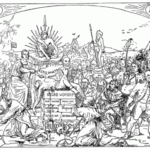Deal on Tax Cuts Will Aid Most, Especially Highest Earners
Deal on Tax Cuts Will Aid Most, Especially Highest Earners:
The tax benefits will flow most heavily to the highest earners, just as the original cuts did when they were passed in 2001 and 2003. At least a quarter of the tax savings will go to the wealthiest 1 percent of the population.
The tentative deal includes a two-year patch for the alternative minimum tax, a reduction in the payroll tax and a plan to reinstate the estate tax with lower rates and higher exemptions than in 2009 — all of which will offer far more savings for high earners than those in the low- or middle-income bracket.
The wealthiest Americans will also reap tax savings from the proposal’s plan to keep the cap on dividend and capital gains taxes at 15 percent, well below the highest rates on ordinary income.
And negotiators have agreed that the estimated $900 billion cost of the cuts will simply be added to the deficit — not covered by reductions in spending or increases in other taxes. That is good news for hedge fund managers and private equity investors, who appear to have withstood an effort to get them to pay more by eliminating a quirk in the tax code that allows most of their income to be taxed at just 15 percent.
In fact, the only groups likely to face a tax increase are those near the bottom of the income scale — individuals who make less than $20,000 and families with earnings below $40,000.
The Republican Party Wears the Pants in this Family
Expanding a bit on a recent theme that the Republicans have a monopoly on testes in the United States government, Senator Jim DeMint (whose home state of South Carolina we all look to for national leadership when it comes to economic development), and Representative Mike Pence of Indiana are pushing for legislation to permanently extend the Bush tax cuts for the rich, eliminate the estate tax permanently, and “fix” the alternative minimum tax.
Democrats and Republicans agree that the Bush tax cuts for people making less than $250,000 per year should be made permanent. So what’s the fight about? It’s only over cutting taxes for the top 5% of wage earners in this country.
Next consider the estate tax. If current law is left alone, it’ll only affect those with estates in excess of $1,000,000. “The estate tax is highly progressive.”
The top ten percent of income earners pays virtually all of the tax; almost half is paid by the richest 1 in 1,000. Much of the political debate about the estate tax centers around its impact on family farms and small businesses. In fact, almost no farms or businesses actually pay the tax.
This means that the current battle over taxes is entirely about how big of a tax cut to give to the rich.
Republicans are on offense – again – and Democrats on defense – again – on policy that Democrats not only spent the entire 8 years of the Bush presidency vowing to undo, but that should play easily to the anti-Wall Street “populist rage” that’s dominated our politics since the start of the financial crisis. As poll after poll demonstrates, public opinion is on their side. They control the White House and half of Congress. Yet they’re still on the run.
Let’s not forget that these tax cuts aren’t free, and that most Republican candidates for Congress ran on closing the federal budget deficit. When it comes time to pay for those tax cuts for the rich, though:
DeMint, known in the Senate for his hard line on spending and support for far-right tea party candidates, dismissed a question about how much his proposal will cost.
“I don’t accept that this is a cost to leave the money with the American people. We’re leaving tax rates the same,” he said.
Without the additional revenue from higher tax rates, the national deficit will climb by $3.7 billion over ten years, according to the non-partisan Congressional Budget Office. The upper-income cuts account for $700 billion.
Yet the White House signaled its collapse on this issue weeks ago, without extracting a single concession from Republicans. For their part, the Republicans are as full-throated as ever, even though public opinion is against them once again.
If the Democrats can’t find a way to win this fight, it’s going to be a long two years.





